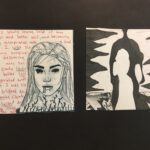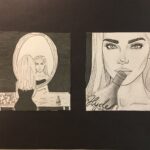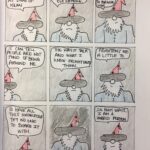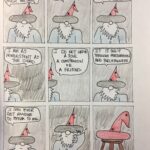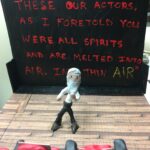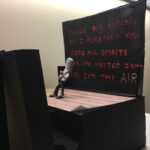
In this morally sensitive project, WahYing Yuen responds to the injustices portrayed in Never Let Me Go and relates them to broader societal injustices. While the sketch might not immediately call Kazuo Ishiguro’s novel to mind, Yuen’s careful reflection explains how she uses symbolism, color, and visual metaphor to explore the same ethical concerns as Ishiguro.
In this drawing, we first see a healthy tree and its watery reflection. We would assume that these two trees would be identical, and we would call one a real tree and the other an illusion or pale imitation of the real tree. On closer inspection, however, the viewer notices subtle differences: the reflection is paler and almost jaundiced, while the soil-bound tree is hearty and strongly colored; the reflection’s blossoms and leaves are already turning color and falling, while the blossoms and leaves on the soil-bound tree remain vibrant. As Yuen points out in her reflection paper, these differences demonstrate how the soil-bound tree drains nutrients from the reflection, just as the healthy citizens in Never Let Me Go maintain their health through the suffering of the clones.
A reflection clearly cannot exist without the object or being it reflects — yet Yuen reverses this relationship, suggesting that the metaphorical tree cannot exist without (exploiting) its reflection. In this way, Yuen’s project might be seen as responding to any number of texts that we have read for this class in its suggestion that even inadvertent “creations” share the same ecosystem as their creators; they are integral and vital to that ecosystem; and they deserve the rights they are so frequently denied.

